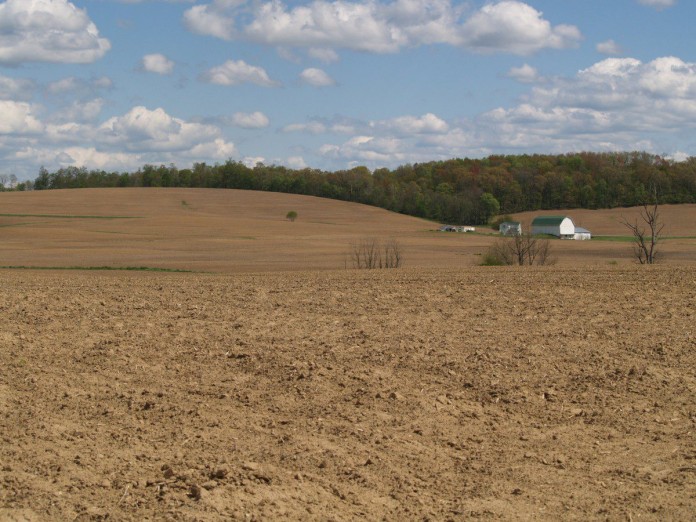Hello Again!
Driving up the lane between the rows of maple trees with some of their orange and red leaves still holding on, I look across the fields and admire the green winter wheat that thanks to Mother Nature was planted timely this year. Pulling up to the farmstead I find my grain bins filled with this year’s harvest and the equipment clean and stored away till next year.
Hearing the crunch of fallen leaves beneath my feet, I look out over my crop fields and begin to ponder what next year’s growing season will bring. Will the spring rains be so much that they may cause gully erosion? Are the tiling systems that were installed still working properly or is some maintenance needed? Should I look for some new land to break out into production?
Agricultural producers are reminded to consult with FSA and NRCS before breaking out new ground for production purposes as doing so without prior authorization may put a producer’s federal farm program benefits in jeopardy. This is especially true for land that must meet Highly Erodible Land (HEL) and Wetland Conservation (WC) provisions. To comply with HELC/WC provisions producers must file an AD-1026 at their local Farm Service Agency.
On this form, the producer will be certifying they will not:
– Plant or produce an agricultural commodity on highly erodible land without following an NRCS approved conservation plan or system;
– Plant or produce an agricultural commodity on a converted wetland; or
– Convert a wetland which makes the production of an agricultural commodity possible.
In addition, producers planning to conduct activities that may affect their HEL or WC compliance, for example removing fence rows, conducting drainage activities, breaking out new land or combining fields, must notify FSA by filing form AD-1026.
With the installation of pipelines becoming a reality in several counties, we also want to caution producers that they must have a determination made on this land if it will be planted to an agricultural commodity.
The determination needs to be completed prior to planting the crop. Failure to request a determination by filing an AD-1026 at your local FSA office prior to planting may put your program benefits at risk. Producers should notify FSA as a first point of contact prior to conducting land clearing or drainage type projects to ensure the proposed actions meet compliance criteria, such as clearing any trees to create new cropland, then these areas will need to be reviewed to ensure such work will not risk your eligibility for benefits.
Once an AD-1026 is received, FSA will notify NRCS, and NRCS will then provide highly erodible land or wetland technical evaluations and issue determinations if needed. Some determinations can be quite time consuming so please allow enough time between the filing of the AD-1026 and when you want to begin the work in the field.
This is especially true when it comes to wetland determinations. If you find you are in need of an AD-1026 or have questions, contact your local FSA Office.
That’s all for now,
FSA Andy













